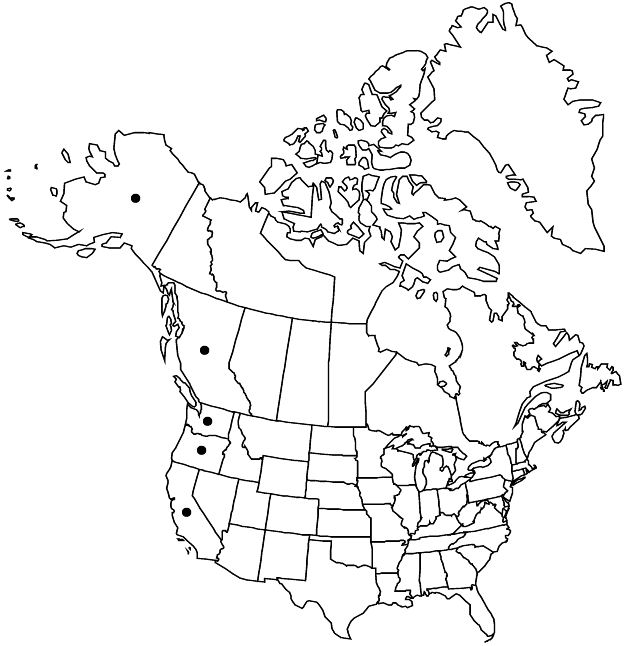Difference between revisions of "Malus fusca"
Ill. Handb. Laubholzk. 1: 723. 1906.
FNA>Volume Importer |
FNA>Volume Importer |
(No difference)
| |
Revision as of 20:38, 24 September 2019
Trees, sometimes shrubs, 50–100(–200) dm. Stems (12–)20–30(–40) cm diam.; bark gray to reddish brown, smooth when young, scaly and deeply fissured at maturity; young branches reddish, puberulent when young, becoming reddish brown or gray and glabrous; lateral flowering shoots becoming spurs, 10–30(–50) mm. Buds red-brown, ovoid, 1.5–4 mm, scale margins ciliate. Leaves conduplicate in bud; isomorphic; stipules deciduous, narrowly lanceolate, 1–5 mm, apex acuminate; petiole 10–30 mm, tomentose, glabrescent; blade ovate, sometimes oval, elliptic, or lanceolate, 3–9(–11) × 1–4 cm, base rounded to cuneate, margins unlobed or 3-lobed, serrate to doubly serrate, sometimes serrulate, apex acute or acuminate, abaxial surface glabrous, adaxial puberulent. Panicles corymblike; peduncles absent; bracts absent; bracteoles sometimes persistent, filiform, 1–4 mm. Pedicels 15–40 mm, villous or glabrous. Flowers 15–20 mm diam.; hypanthium glabrous or tomentose; sepals triangular, 3–6 mm, shorter than tube, apex apiculate, abaxial surface glabrous, adaxial hoary-tomentose; petals white, sometimes pink, orbiculate to obovate, (6–)10–15 mm, claws 1.5–2 mm, margins erose or undulate, apex rounded; stamens ca. 20, 4–6 mm, anthers white before dehiscence; styles 3(or 4), connate in proximal 1/3, 6–7 mm, longer than stamens, glabrous. Pomes yellow to purplish red, oblong, sometimes ovoid or obovoid, 6–10(–13) mm diam., cores enclosed at apex; sepals deciduous, sometimes tardily; sclereids abundant surrounding core. Seeds reddish brown. 2n = 34.
Phenology: Flowering Apr–early Jul; fruiting Jun–Nov.
Habitat: Moist, open places, open Sitka spruce forests, forest edges, beach edges, sea cliffs, swamps, bogs, brackish marshes, clearings
Elevation: 0–600 m
Distribution

B.C., Alaska, Calif., Oreg., Wash.
Discussion
Malus fusca is tolerant of occasional exposure to salt water. The dry flesh of the fruit is edible, and while tart, becomes sweeter with time. The bark was prepared as medicine by western coastal Native Americans.
Malus fusca is a western North American apple species that is morphologically and phylogenetically closer to Asian species than to eastern North American ones (E. E. Dickson 1995). The species hybridizes in Oregon and Washington with the cultivated apple, M. pumila (P. F. Zika 2004), and the hybrid is M. ×dawsoniana Rehder. Similar in habit and bark to M. fusca, the hybrid differs by its larger flowers and larger elliptic-oblong or obovate-oblong, (4 or)5-loculed fruit with a persistent calyx. It differs from M. prunifolia by its corymblike inflorescences and the pome lacking swollen sepals.
Selected References
None.